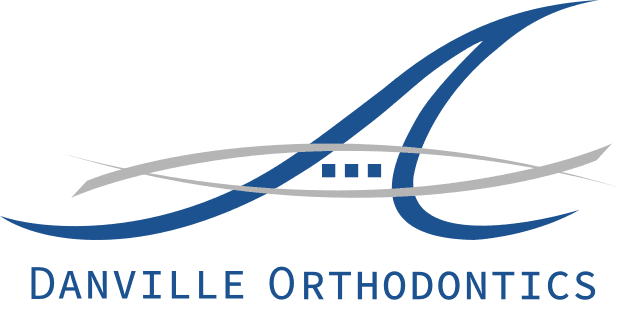Orthodontic Consultation: What to Expect and Questions to Ask
In this blog, we will guide you through what to expect during an orthodontic consultation and provide you with a list of important questions to ask. We understand that the prospect of undergoing orthodontic treatment can be exciting and overwhelming, and we aim to provide you with the knowledge and confidence to make informed decisions about your dental health.
The Initial Appointment
The first orthodontic consultation sets the foundation for your entire orthodontic journey. You can meet your orthodontist, discuss your concerns, and comprehensively examine your teeth, jaws, and overall oral health. Understanding what to expect during this initial appointment can help alleviate any apprehensions.
When you arrive at the orthodontist's office, you will likely be asked to complete some paperwork, including a medical and dental history form. Providing accurate and detailed information about your health and previous dental treatments is essential for the orthodontist to understand your unique situation fully.
Meet your orthodontist or their team after completing the paperwork. Discuss your goals and concerns, and ask questions to customize the treatment plan to your needs.
The orthodontist will examine your teeth, jaws, and facial structure to evaluate alignment, spacing, and dental issues. X-rays or impressions may be taken for further analysis and treatment planning.
The orthodontist will review your records and discuss treatment options, explaining the pros and cons, outcomes, duration, and risks. Ask questions to understand the treatment fully.
At your first visit with an orthodontist, you'll discuss the cost of treatment, payment options, and insurance coverage. They'll provide an estimate and timeline, but treatment will probably start later. Take time to consider your options before making a decision.
Medical and Dental History
Your medical and dental history is crucial in determining the appropriate orthodontic treatment for you. During your initial orthodontic consultation, the orthodontist will ask you to provide detailed information about your medical background and dental experiences. This information helps them understand your overall health and any factors impacting orthodontic treatment.
Why is Medical and Dental History Important?
- Identifying Underlying Health Conditions: Certain medical conditions or medications can influence the type of orthodontic treatment you receive. Diseases like diabetes, heart problems, or bleeding disorders may require special considerations or precautions during adult orthodontic treatment. Informing your orthodontist about existing health conditions ensures they can tailor the treatment plan to your needs.
- Assessing Oral Health: Your dental history provides insights into previous dental treatments, such as fillings, extractions, or root canals. It also allows the orthodontist to identify any ongoing dental issues, such as gum disease or tooth decay, which may need to be addressed before or during orthodontic treatment.
- Understanding Orthodontic Expectations: Your past experiences with orthodontics, if any, are important to know. If you have previously worn braces or undergone any orthodontic treatment, it helps the orthodontist understand your dental history and how it may impact the current treatment plan. Additionally, discussing your expectations and goals for orthodontic treatment allows the orthodontist to customize the plan to meet your desired outcomes.
What Information Should You Provide?
Provide accurate and detailed information when completing the medical and dental history forms. Key aspects to include are:
- General Health: Inform the orthodontist about any chronic medical conditions, allergies, medications you are taking, or surgeries you have undergone. Be sure to mention any conditions that may affect your oral health or require specific considerations during treatment.
- Dental History: Provide details about any previous orthodontic treatment, such as braces or aligners. Mention any dental procedures you have undergone, such as fillings, extractions, or root canals. Inform the orthodontist if you have experienced dental issues like gum disease, cavities, or tooth sensitivity.
- Habits: Discuss any habits that may affect your oral health or the success of orthodontic treatment, such as thumb-sucking, nail-biting, or teeth grinding (bruxism).
- Dental Anxiety or Fear: Let the orthodontist know if you have dental anxiety or fear. They can provide additional support and guidance to help you feel comfortable throughout treatment.
Remember, your information is confidential and essential for creating a personalized treatment plan that addresses your needs. Sharing your medical and dental history enables your orthodontist to provide the most effective and safe orthodontic treatment.
Oral Examination and Evaluation
During an orthodontic consultation, a thorough oral examination and evaluation are conducted to assess the alignment of your teeth, the position of your jaws, and your overall oral health. This evaluation is essential in determining the most suitable orthodontic treatment for you. Let's look at what to expect during the oral examination process.
- Visual Examination: The orthodontist will inspect your teeth, jaws, and facial structure. They will look for any obvious misalignments, irregularities, or abnormalities. This examination helps the orthodontist identify potential orthodontic issues and assess the overall harmony of your facial features.

- Teeth Alignment and Bite Analysis: The orthodontist will evaluate the alignment of your teeth and assess how your upper and lower teeth fit together when you bite. They will check for any crowding, spacing, or rotations of the teeth. Additionally, they will analyze your bite relationships, such as an overbite, underbite, crossbite, or open bite. These assessments provide valuable information for treatment planning.
- Jaw Position and Function: The position and function of your jaws play a crucial role in orthodontic treatment. The orthodontist will examine the relationship between your upper and lower jaws, assessing how they align and function. They will evaluate your jaw joint (temporomandibular joint) for any signs of dysfunction or misalignment that may impact the treatment approach.
- X-rays and Diagnostic Imaging: X-rays are commonly taken during an orthodontic consultation to provide a more comprehensive view of your dental structures. These images allow the orthodontist to assess the positions of teeth roots, identify any hidden dental issues, and evaluate the development of teeth that may not have erupted yet. Other diagnostic imaging, such as panoramic radiographs or cephalometric X-rays, may also be taken to aid in treatment planning.
- Dental Impressions: In some cases, the orthodontist may take dental impressions or molds of your teeth. This involves biting into a soft material that hardens into a three-dimensional replica of your teeth. Dental impressions provide detailed information about your teeth' shape, size, and alignment, allowing the orthodontist to create precise treatment plans or fabricate custom orthodontic appliances.
- Additional Assessments: Depending on your specific needs, the orthodontist may conduct further assessments. These may include evaluating your airway, assessing your gum and bone health, or examining the growth and development of your face and jaws. These assessments help determine if additional treatments or interventions are required alongside orthodontic treatment.
Combining the findings from the oral examination, bite analysis, X-rays, and other diagnostic records, the orthodontist comprehensively understands your unique orthodontic needs. This information is then used to develop a customized treatment plan tailored to achieve the desired results.
Diagnostic Records
As part of an orthodontic consultation, diagnostic records are taken to provide detailed information about your teeth, jaws, and facial structure. These records aid in treatment planning and allow the orthodontist to create a customized treatment plan tailored to your needs. Let's explore the various diagnostic records that may be taken during your consultation:
X-rays: X-rays, such as panoramic radiographs and cephalometric X-rays, provide a comprehensive view of your dental and skeletal structures. These images help the orthodontist evaluate the positions of your teeth roots, identify any impacted teeth, assess bone density and jaw relationships, and detect any underlying dental issues that may not be visible during a visual examination.
- Photographs: Photographs of your face, profile, and smile are taken to document your current dental and facial appearance. These photographs serve as a visual record that helps the orthodontist assess your facial harmony, tooth alignment, and overall aesthetics. They are also helpful in tracking the progress and outcome of your orthodontic treatment.
- Dental Impressions: Dental impressions involve biting into a soft material that imprints your teeth and gums. These impressions are used to create plaster models or digital 3D models of your teeth. The models provide a detailed representation of your teeth' alignment, spacing, and bite relationship. They help the orthodontist analyze your dental structures and plan the necessary tooth movements for treatment.
- Intraoral Scans: Instead of traditional dental impressions, orthodontists may use advanced technology like intraoral scanners to create digital impressions of your teeth. These scanners use lasers or other optical systems to capture precise 3D images of your teeth and gums. Intraoral scans provide highly accurate and detailed digital models that can be used for treatment planning and creating orthodontic appliances.

- Measurements and Analysis: During an orthodontic consultation, various measurements and analyses are performed to assess your dental and skeletal relationships. This may include measuring tooth size, arch width, overbite, overjet, and other parameters. These measurements help the orthodontist analyze your dental structures and plan the appropriate tooth movements to achieve optimal alignment.
- Functional Assessments: In some cases, functional assessments may be performed to evaluate how your jaws and teeth function during various movements. This can include assessing your bite, jaw joint movements, and muscle function. Functional assessments help the orthodontist identify any abnormalities or functional issues that may require consideration in the treatment plan.
These diagnostic records, in combination with the findings from the oral examination and evaluation, provide a comprehensive understanding of your orthodontic needs. The orthodontist will carefully analyze these records to create a personalized treatment plan addressing your concerns and goals.
Treatment Duration and Timeline
The duration of orthodontic treatment can vary significantly depending on your orthodontic issues, the chosen treatment option, and how well you comply with the treatment plan. During your orthodontic consultation, the orthodontist will provide you with an estimated treatment duration and outline the general timeline of your orthodontic journey. Here's what you can generally expect:
- Initial Phase: There will be an adjustment period at the beginning of your treatment, regardless of the chosen orthodontic option. This phase typically involves getting accustomed to wearing braces or aligners, understanding oral hygiene instructions, and adapting to any necessary dietary changes. The initial step may take a few weeks to a couple of months.
- Active Treatment Phase: The active treatment phase is when your teeth start moving and aligning. This phase's duration varies based on your case's complexity and the chosen treatment option. On average, active orthodontic treatment can last from several months to a few years. During this time, regular visits to the orthodontist will be scheduled for adjustments, progress monitoring, and to address any issues that may arise.
- Maintenance Phase: A maintenance phase follows the active treatment phase is complete, and your teeth have achieved the desired alignment. This phase aims to maintain the achieved results and ensure long-term stability. Maintenance typically involves wearing retainers, preventing your teeth from returning to their original positions. The length of the maintenance phase varies, but it generally lasts for several months to a few years, depending on your orthodontist's recommendation.
It's important to understand that the mentioned timelines are general estimates and can vary based on individual factors. Factors that may influence the treatment duration include the severity of your orthodontic issues, your age, your body's response to treatment, and your compliance with instructions provided by the orthodontist.
Contact your Danville dentist, Dr. Hoss Abar, DDS, MSD, at Danville Orthodontics to learn more about Orthodontic Consultation.
Resource:
How to Choose the Right Orthodontic Treatment for Your Needs?
*Neither this nor any other content in this media is meant to prescribe, recommend, or prevent any treatment or procedure. We highly recommend that you get the advice of a qualified dentist or other medical practitioners regarding your specific dental condition.
